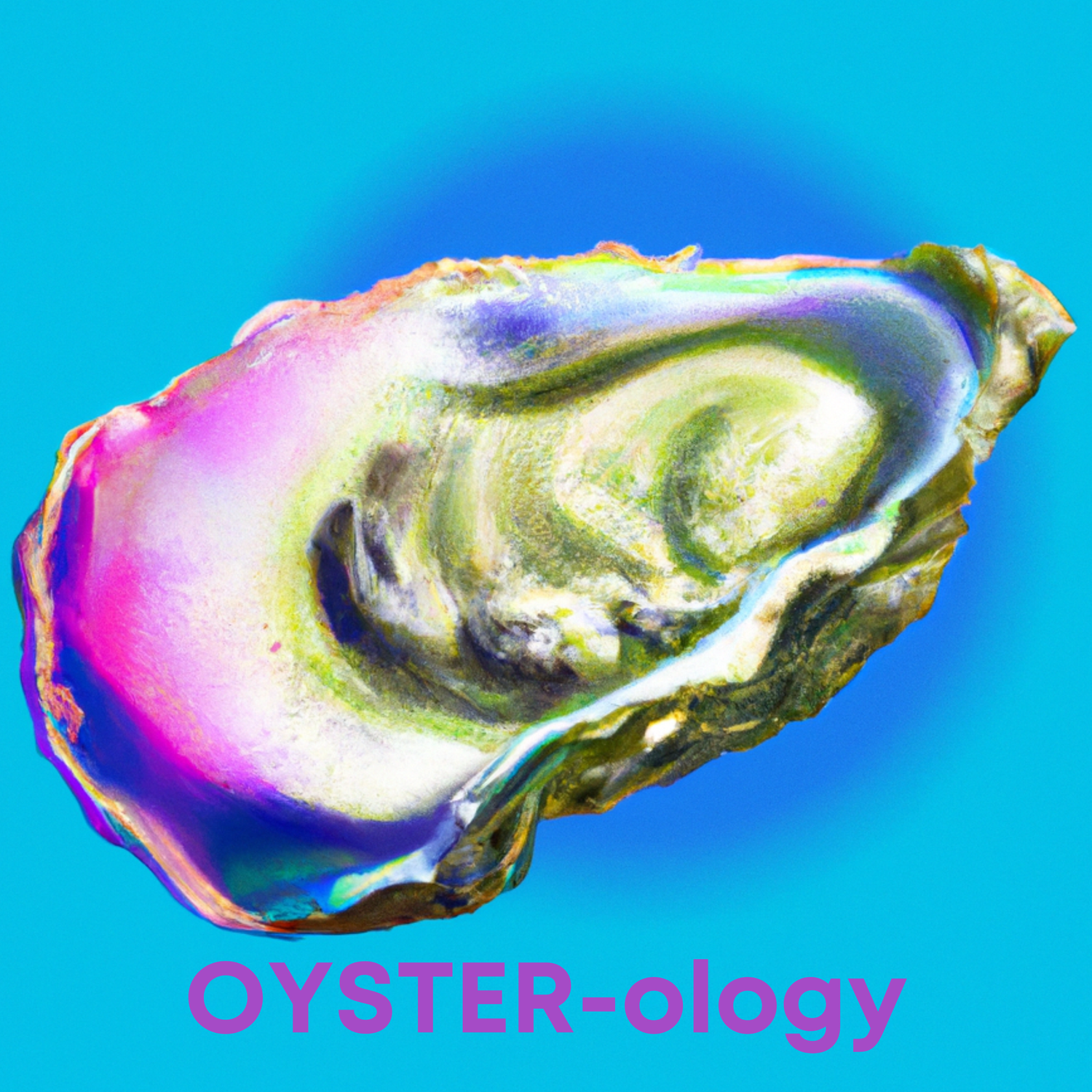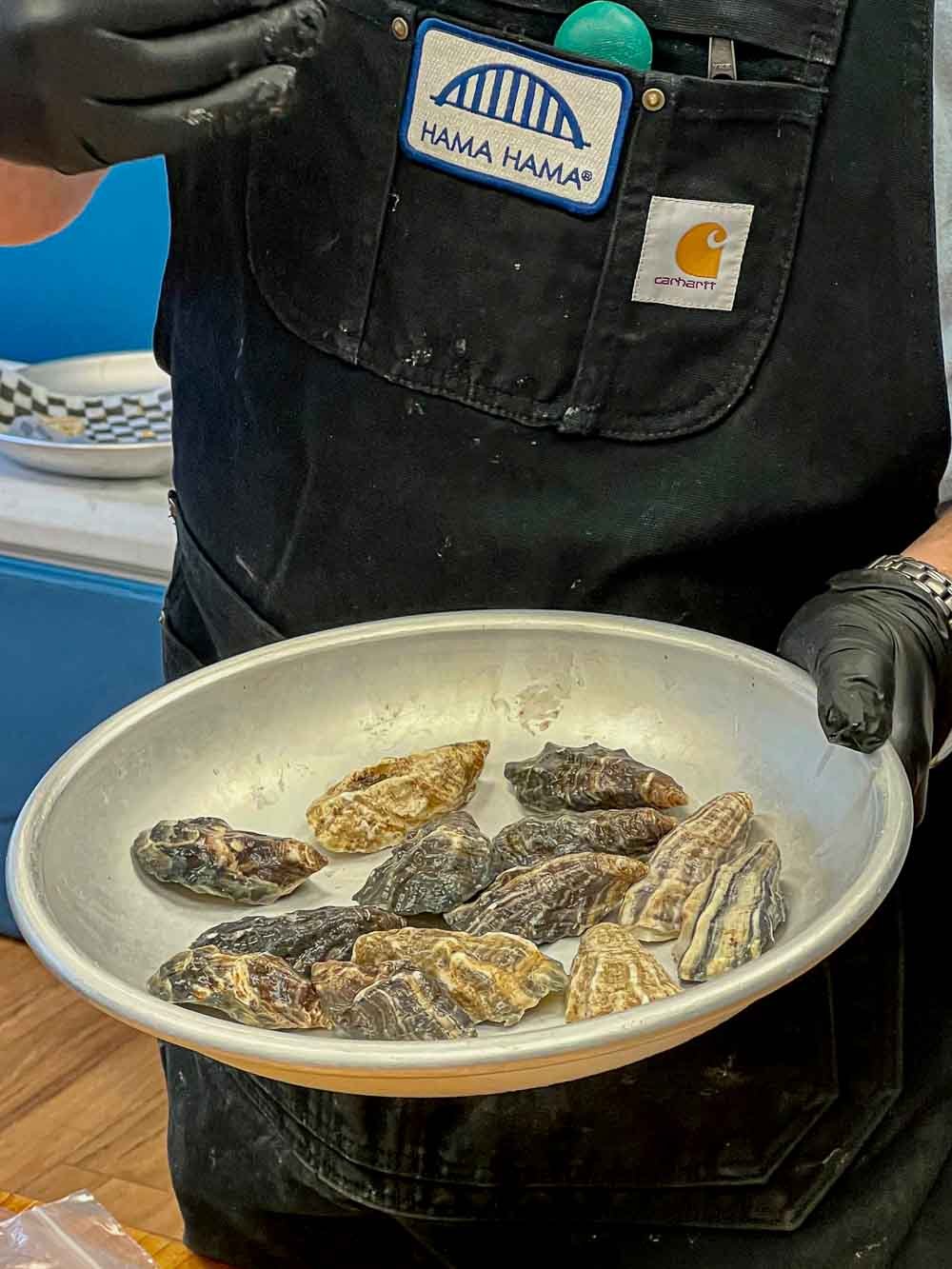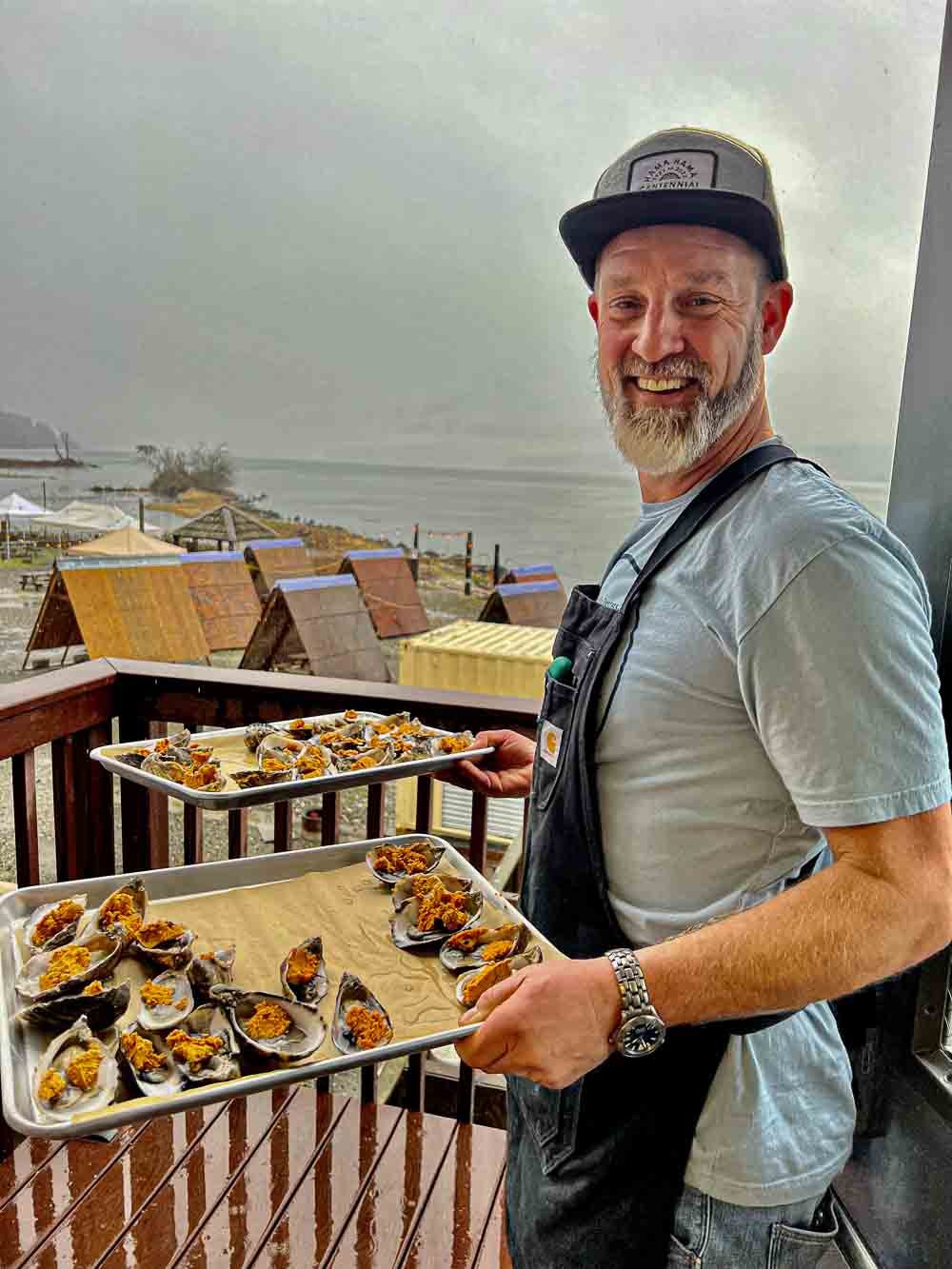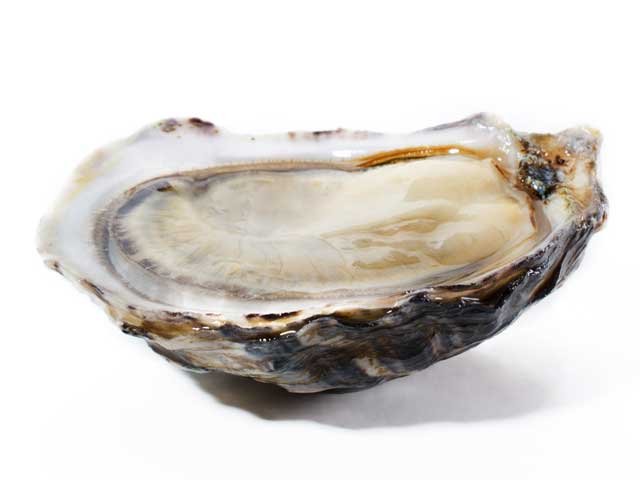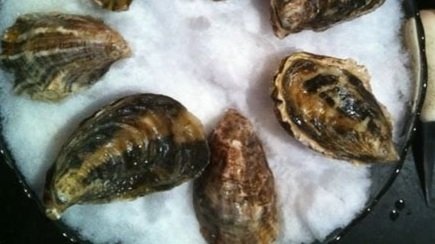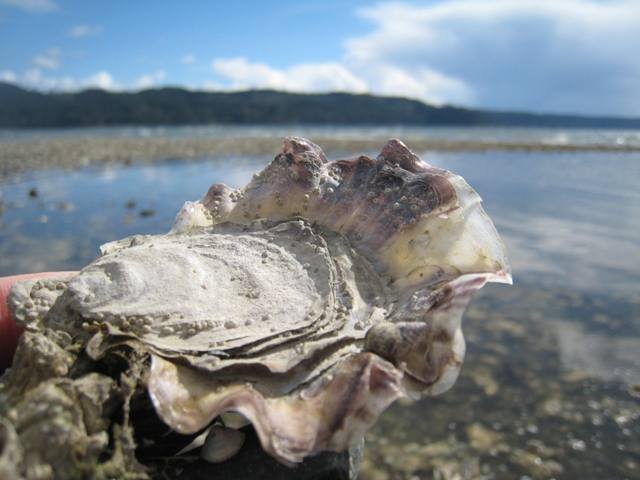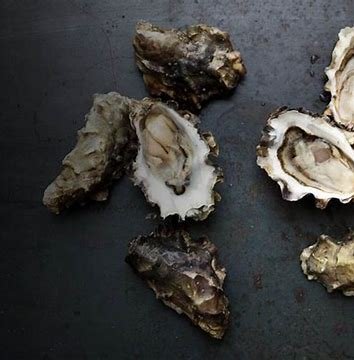Geeking out in the Hama Hama Oyster Class
/Oysters. Those rough, rock-like shells look more like ancient dinosaur remnants than living animals. There is something about the oyster that seems contradictory – craggy and unsightly on the outside, smooth and pearlescent within. Yet they are one of Nature’s most complete food sources. The shell is a natural exoskeleton that houses a silky, glistening animal which is both good for the environment and good for the plate. Depending on the species, they can thrive in salt, brackish and even fresh water where they work tirelessly to filter it and, in turn, clean the environment more than perhaps any other creature in the sea. Oh yeah, and they’re delicious.
To the uninitiated eater an oyster seems daunting. But the more you know about the scary looking mollusk the easier it is to eat it. So when I recently heard about the Hama Hama Shellfish Farm’s Oyster Class I jumped at the opportunity to dive in and, in the name of research of course, eat as many of these fascinating creatures as I could.
The good people of Hama Hama Shellfish Farms absolutely geek out on oysters, which was great for me since, for decades I have been sort of obsessed with these bivalves and in love with their flavor. But I don’t just like to eat oysters, I like to know about them, because food usually tastes better if you understand what you’re putting in your mouth. And the Oyster Class was all about extolling the wonders of oysters and - yes - eating them, too.
Sitting around a large table above the farm store of the largest, yet laid back aquaculture operation gracing the shores of Hood Canal in Washington’s Olympic Peninsula, we learned about each of of the five principal families of oysters in North America, starting with the indigenous yet elusive Olympia oyster, to the powerhouse Pacific, then onto the beloved Kumamoto before sliding over to the East Coast favorite Virginica and ending with the robust European Flat.
The Hama Hama class took us though the range of oysters and the more I learned about them the hungrier I became. Running my hands over the rugged, impenetrable shells I thought about the glistening meat and liquor inside, until finally it was time to get shucking. There’s something very satisfying in shucking an oyster. Locating the little hinge on the back end you probe the point of the knife, feeling for a softer part in which to get purchase. From there a little twist of the wrist pries it open with a victorious “pop” when the creature within gives up the ghost. Scraping the inner roof of the shell severs the adductor muscle which holds it tight together, beneath which the silky, shiny animal is revealed, beige or pale gray and almost floating in a crystal clear pool of briny elixir. A slick passing of the knife beneath it severs the other adductor, rendering the tasty morsel ready to slide past your quivering lips into your mouth.
The initial flavor “attack” is one of the sea – a clean, bright wash followed by a soft yet firm nugget of meaty succulence. If you’re smart you won’t just swallow it – a classic amateur move. Instead, you’ll chew the meat gently, experiencing a kaleidoscope of emerging flavors, from salty to sweet, perhaps some minerals, and ending with a hint of melon, cucumber or even copper. Akin to tasting wine, the longer you chew the oyster the more you taste; the more you taste the more you fall in love.
To an untrained eye, an oyster is an oyster and little difference is noticed between them. But each of the five species available have distinct differences in shell shape and size, thickness of the cup and the animal inside. Much like French wine – whose appellation is designated based upon even the smallest tract of vineyard and the terroir of that space – even the same species of oyster develops unique traits based upon the waters and style in which they grew, rendering them profoundly different from each other. Our able instructor highlighted this best by presenting us with two very different-looking oysters: the Hama Hama and the Blue Pools.
The Blue Pools – a Pacific Oyster that’s been cultivated, tumbled and raised to have a smooth shell and deep cup housing a plump, juicy mollusk inside. It delivers a gentle, vegetal flavor marinated in slightly briny water with the aroma of a quiet ocean cove barely tinted green with seaweed and lettuce. Its texture is pure silk, with a velvet attack and pillowy meat firm enough to erase any notion of that fictitious-yet-feared “sliminess” that newcomers to oyster eating worry about.
But where the Blue Pool presents as a sweet little stroll along your favorite seaside paradise, the Hama Hama evokes images of a wilder, more raucous ocean and maybe even waves crashing on the rocks. Outside, its flatter shell varies in shape and size – a gnarly, barnacle-crusted beach bottom skin-ripper. It imparts a sharper, saltier taste but finishes silky with a cucumber essence. Two completely different oysters – except that they’re not. Both are the same species of Pacific Oyster (crassostrea gigas) and it’s hard to decide which of the two are better. And even harder to accept that, in all their differences, they are the same.
One of the many gifts of living in the Pacific Northwest is that you can actually find ALL of the principal five oyster species in this one, single region. Sure, there are many more species of oyster, spanning the globe from the cold waters of the northern hemisphere to the icy brine of the southern cone, and even in the warmer tropical waters of the middle zone. But if you’re in the US or Canada the species of commercial oysters are pretty much limited to the Big Five, which outnumber the production of all the others by, well, a lot. But don’t be disappointed with such a small number, because within that five-biv’ed universe are many varieties, each unique and naturally delicious. The oyster experts at Hama Hama want you to know that and to experience all of them as often as possible. Whether outdoors at their Oyster Saloon in one of their cool tasting shacks slurping down a dozen or so, or upstairs geeking out in their Oyster Class, a trip to Hama Hama is a tasty way to enjoy some of Nature’s most perfect food.
Some images courtesy of Hama Hama Oyster Company
